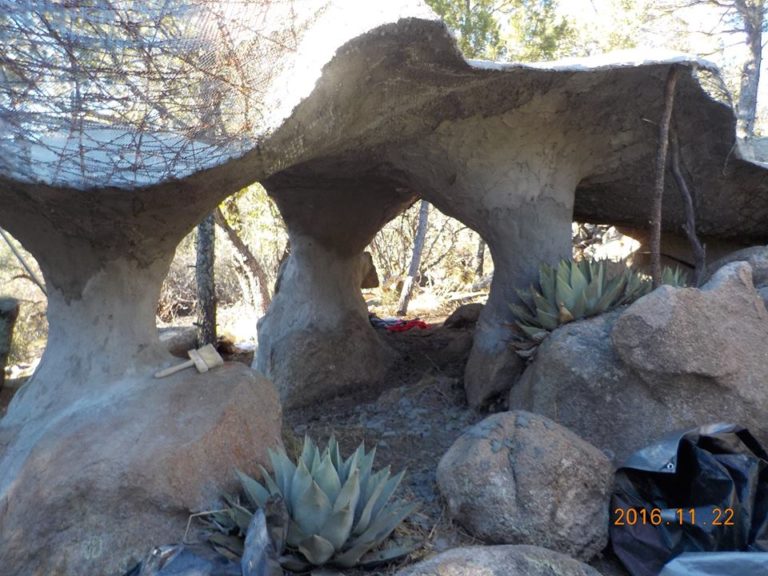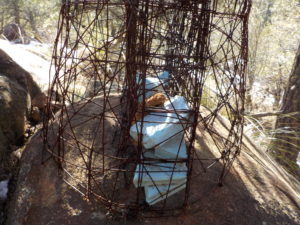Earth Integrated Foundation Design
Flex-shell columns are more damage resistant to ground movement and, if they are thoughtfully integrated into the undisturbed, non-level natural terrain and ecosystems, they provide other practical advantages like comfortable living spaces, paths, and various types of gardens.
If the columns are integrated with the natural terrain and retaining walls and garden terracing are present versus only using the traditional gauge-berm foundation method of creating an artificial flat area to build on top of (which triggers instability and rapid erosion that leads to progressive damage to the foundation and the surrounding ecology and soils both upstream and downstream from the disruption), the natural ecosystem will be favored because it ensures that fewer materials are used, the land is less disrupted, and the ecosystem isn’t forced out of balance.


Overall, using a retaining wall and garden terracing approach manages runoff through sheltered garden spaces which shields the foundations for all the leveled or cleared human spaces, while building, stabilizing, and preserving native soils and fauna. By preserving native soils and fauna, the sheltered runoff gardens enhance the soils microbiota with pathogen-suppressing microbes, local immunity protection, and pest protection that exists naturally in a healthy diverse ecology.
The terraced environment lends itself to successful concentrated small-garden farming because it stores water runoff and uses little water to produce bounty. This terracing combined with the nearby sheltering structure produces a stable and controlled environment for successful micro farming.





